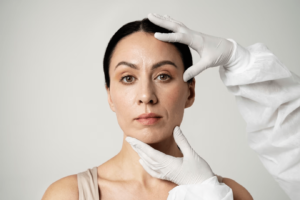What is Cervicocranial Syndrome?
Picture this: you are going about your day, working and tending to your hobbies, but you are constantly getting headaches, neck pain, and bouts of dizziness. Not only that, but you are exhausted despite how much sleep you’re getting. While there are numerous reasons that you could be experiencing these symptoms, it could potentially be Cervicocranial Syndrome.
Cervicocranial Syndrome, sometimes called Craniocervical Junction Syndrome or Barre-Lieou Syndrome, is a group of symptoms that are collectively caused by an injury, disease, degeneration, or a combination of these things. This syndrome can develop when the vertebrae found in your neck or cervical spine (C1-C7) are shifted, collapsed, or misaligned. Typically, the upper cervical vertebrae and occiput (sometimes referred to as C0) are the most commonly damaged regions and may not show up on diagnostic tests such as an MRI. These irregularities cause improper functioning of the cervical spinal nerves, and when the pathway of those nerves is interrupted, the communication between your brain, brain stem, and the rest of your body is negatively affected. Dr. Greenberg is very familiar with Cervicocranial Syndrome, not only because he treats patients suffering from this condition, but also because he personally suffered with this ailment years ago after being struck by a drunk driver.
Common degenerative conditions that may lead to Cervicocranial Syndrome are Osteoarthritis, whiplash, and Ehlers-Danlos Syndrome. Additionally, injuries like car accidents could create enough trauma to the cervical spine where a patient could develop Cervicocranial Syndrome even during the healing process. Luckily, regenerative medicine has been shown to help ease the symptoms of these conditions.
Symptoms of Cervicocranial Syndrome
Your brain stem, as Dr. Greenberg states, is where all of our autonomic nervous system controls come from. Interference with the autonomic nervous system could cause a multitude of symptoms, including heart racing, anxiety, and headaches. Patients could have tinnitus, which is ringing in the ears; they can often feel off balance, may have trouble with concentration, or difficulty with swallowing. Additional symptoms can include:
- Neck pain
- Fatigue
- Vertigo
- TMJ (Lock Jaw)
- Difficulty tracking objects
- Sensation of a lump in the throat
Treating Cervicocranial Syndrome
It is not uncommon for those experiencing the above symptoms to use nonprescription pain medications such as acetaminophen, aspirin, or ibuprofen. In more severe cases where individuals must see a healthcare professional, they may be prescribed opioids to help curb the pain. Other alternatives include receiving chiropractic care, physical therapy, nerve block injections, or even surgery. Prolotherapy and Platelet Rich Plasma (PRP) as well as stem cell procedures, which are offered in office at GRM, have been shown to help treat Cervicocranial Syndrome. These treatments involve injecting natural substances – dextrose, lidocaine, and platelet rich plasma derived from your own blood and stem cells taken from your body– into the affected area to trigger the body’s natural healing response.

Why Use Prolotherapy and Platelet Rich Plasma?
These two forms of regenerative treatments involve the use of natural substances, including one’s own blood. The chances of rejection, infection, or allergic reactions are low since the substances are naturally occurring. Prolotherapy, PRP, and stem cell procedures are opioid-free treatments and use your body’s own pain reduction mechanisms to reduce pain related to trauma or degeneration.
Prior to treatment, Dr. Greenberg will perform The Greenberg Method; this includes a review of your most recent radiographs to examine the state of your neck and head, especially the base of the skull that protects essential nervous systems such as balance, coordination, and the all-important autonomic nervous system (ANS). Even though Dr. Greenberg is an MD, he also performs gentle manipulation to the upper cervical spine and scapula in patients suffering from CCS. Dr. Greenberg has over two decades of experience treating the C1-C2 region. Should you have any questions about Cervicocranial Syndrome, Osteoarthritis, and more, please do not hesitate to contact our team.
Looking to treat your pain safely while improving the quality of your life? Schedule a consultation with Greenberg Regenerative Medicine’s team to determine a plan that is best suited for your needs.




